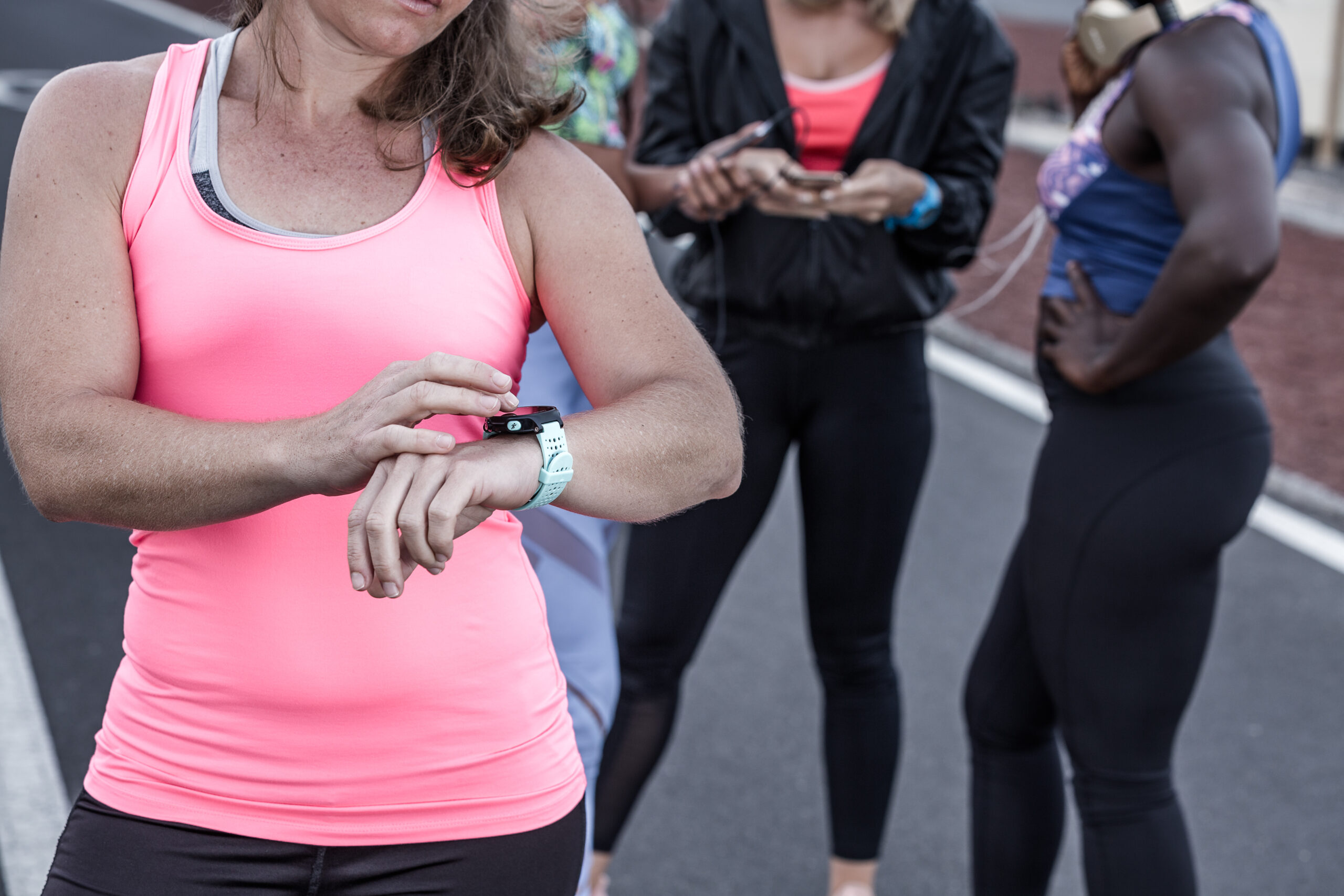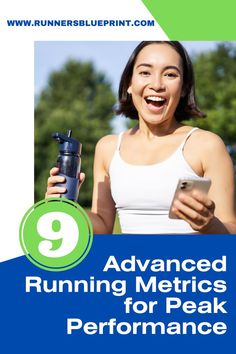When I first started running, I thought tracking running metrics on my running watch was overkill—just a bunch of numbers.
But once I began paying attention to stats like training load, ground contact time, and vertical oscillation, I realized they could completely change how I trained.
Let’s get into the details of how you can use these metrics to enhance your running form, efficiency, and overall fitness.
Training Load
If you’re training hard regularly, your fitness will probably improve. But if you take too much time off, your performance might start slipping. That’s fitness adaptation for you.
So how do you know if you’re doing it right? Enter training load.
This metric tracks the overall strain of your workouts, using heart rate data to measure how much stress you’re putting on your aerobic system during and after your runs.
This data gives you a personalized recommendation on when to scale back or push a bit harder. It’s all about finding that sweet spot for optimal training.
Tracking this metric changed my approach: I’d go out every day, push myself to the max, and then wonder why I’d feel so wiped out.
I remember one day my watch practically yelled at me to take it easy after a brutal interval session.
Naturally, I ignored it, thinking I knew better, and went out for a long run. Rookie mistake! I ended up with a calf strain and a week on the sidelines.
Now, when my watch says rest, I take it seriously—it’s made a big difference.
Ground Contact Time
If you’re struggling with injuries, ground contact time might offer some clues.
GCT measures the time each foot spends on the ground while you’re running. A longer ground contact time is generally correlated with an inefficient running economy. Lowering your ground contact time may improve your running efficiency and help prevent injury.
I’d been dealing with persistent knee pain a few years back, and it was driving me crazy. I tried changing shoes, adjusting my pace, even taking a break, but nothing seemed to help.
Eventually, I started tracking my GCT, and it turned out my left foot was lingering on the ground way longer than my right—it was a form imbalance I’d never noticed.
After working on strengthening my weak side and shortening my stride, the pain finally disappeared.
If you want to lower your GCT, try focusing on a quicker cadence and shorter stride. Think of it as taking ‘ninja steps’—light, quick, and stealthy.”
Vertical Oscillation
Vertical oscillation measures how much your upper body moves up and down as you run.
Ideally, you want to minimize this “bounce” to reduce energy waste. If you’re bouncing too much, that energy isn’t helping you move forward—it’s working against you.
Let me explain.
When running, your ultimate purpose is to propel your body forward and keep moving in a horizontal direction. Not up. Gravity speed isn’t going to change anytime soon.
I hope this makes sense since by lowering vertical oscillation you might reduce energy waste, gravitation friction, and improve running economy. That’s a bunch of good things if you ask me.
Excessive vertical oscillation may also indicate that your form is breaking down. Thus, you can use this feature to monitor how your form deteriorates and how long it takes to go south, even if the goal pace is maintained.
To keep vertical oscillation low, work on shortening your stride length and imagine balancing something on your head to keep your movement steady. Exercises like squats and jumps can help strengthen your core, glutes, and hamstrings—all essential for better running form.
I used to think a little bounce was normal, part of the rhythm. But then I saw a race video, and it was a wake-up call. I was bobbing up and down like I was on a pogo stick!
So, I started working on minimizing that ‘bounce’ by imagining a low ceiling I had to duck under. After a few weeks of working on it, I could feel the difference in how steady and efficient my runs became.
Vertical Ratio
Vertical ratio measures your running efficiency by comparing your vertical oscillation to your stride length.
I know this sounds a little bit technical but just bear with me.
A lower vertical ratio means a smoother run with less energy lost to bouncing—imagine gliding over the pavement!
On the other hand, by lowering the amount of time your body travels vertically, you can improve your efficiency and speed down the road.
To improve your VR, I’d recommend either (1) increasing your stride length. Instead of reaching over on each step to cover more ground, try applying more power off the ground.
Or (2) reduce your vertical oscillation by landing on your forefoot and adding a “bounce” to your strides.
Heart Rate
Heart rate (HR) is one of the best ways to gauge your effort during a run.
As you run faster or longer, your heart pumps harder to fuel your muscles, raising your BPM (beats per minute). Tracking this helps you understand how hard you’re pushing yourself.
Heart rate is broken down into zones that correlate to workout intensity. Higher heart rate zones indicate more intense effort, so understanding these can optimize your training.
As a runner, you’ll want to keep training within specific heart rate zones to make the most out of your workouts.
For example, an easy run should not extend beyond zone 3, or you’re pushing your body when you should be taking it easy.
You should also know your your max heart rate (HR Max), which is the maximum number of beats per minute your heart can handle during intense exercise.
You can estimate it by subtracting your age from 220, but I’d urge to take a lab test for more accuracy.
Running Power
I remember when I first started using running power metrics. I was hesitant—numbers and watts felt like something only cyclists cared about. But after a coach friend convinced me, I decided to try it.
On my next tempo run, I noticed how focusing on my power output helped me keep my effort steady, even on hills. Monitoring my power output became my secret weapon for maintaining pace, even when fatigue set in.
So what is running power all about?
Running power measures the amount of work you do against resistance during your run. It’s expressed in watts (W); a higher wattage means more power output per step. Tracking power helps maintain steady efforts, improving your form, pacing, and overall speed.
In other words, it’s a metric of output you produce while running.
The main benefit of monitoring power output is that it helps you keep steady efforts on your runs. This helps improve your running form, practice better pacing, and achieve faster running times.
Stride Length
Stride length is the distance you cover with each step. It varies based on your physiology, strength, and mobility, but the key is finding an optimal stride length without overreaching.
I found that overreaching was slowing me down—like hitting the brakes with every step. Adjusting this has made my strides more effective and less tiring.
What is the best way to improve stride length? Focus on increasing your cadence (see the next metric).
Cadence
Cadence is one of the most important stats for examining running form efficiency.
Cadence, or steps per minute (SPM), is crucial for running efficiency. Most experts suggest aiming for 170-180 SPM. Count the steps your right foot takes in one minute to find your cadence, then multiply by two.
The best way to determine your running cadence is to count the number of steps your right foot hits the ground in one minute, then multiply it by two.
Cadence could be the key to running faster and more efficiently.
If you want to become a faster runner, you can do either one of two ways: (1) by increasing your stride length so you cover more distance with each step or (2) by increasing your cadence so that.
When I first heard about cadence, I thought, ‘Do I really need to count my steps?’ But curiosity won out, and I downloaded a 180 BPM playlist to sync my steps to the beat. At first, it felt strange, like my legs were moving to someone else’s rhythm.
But after a few weeks, my runs started feeling smoother, like I was gliding rather than pushing. Now, I aim for 170-180 steps per minute (SPM), and I feel faster and more efficient without extra effort.
VO2 Max
VO2 max tells us how much oxygen our body can utilize during max effort—crucial for gauging our endurance. It’s a key indicator of your aerobic capacity. While lab tests provide the most accurate reading, some wearables can estimate it using heart rate data and algorithms.
Any exercise helps your VO2 max. However, research has found that going intense and short—as in high-intensity interval training—is one of the most efficient ways to increase and/or maintain an optimal VO2 max. Learn more about VO2 max charts here.
Visualizing Your Metrics: Metric Tracker Chart
Understanding the ideal ranges for key running metrics can help you set realistic goals and track your progress effectively.
Below is a Metric Tracker Chart that breaks down the optimal values for various metrics, categorized by experience level. This visual guide will assist you in identifying where you stand and where you can improve.
| Metric | Beginner | Intermediate | Advanced | Notes |
| Cadence (SPM) | 160-170 | 170-180 | 180-190 | Aim for 170-180 SPM for injury prevention. |
| Vertical Oscillation | 6-8 cm | 5-7 cm | 5-6 cm | Lower values indicate a more efficient stride. |
| Ground Contact Time | 250-300 ms | 200-250 ms | 180-200 ms | Shorter contact times generally lead to faster paces. |
| VO2 Max | 35-50 mL/kg/min | 50-60 mL/kg/min | 60+ mL/kg/min | Higher values indicate better aerobic capacity. |
| Lactate Threshold | 60-70% of VO2 Max | 70-80% of VO2 Max | 80-90% of VO2 Max | Increasing your LT can help sustain faster paces. |
How to Use the Chart
- Identify Your Level: Look at the metrics that correspond to your running experience—whether you’re just starting out or have been running for years.
- Set Goals: Use the ideal ranges to set realistic and achievable goals for your training. For example, if you’re a beginner, focus on increasing your cadence gradually.
- Track Progress: Regularly measure these metrics during your training sessions to see where you stand. This will help you assess your improvements and adjust your training plan as needed.
I Want to Hear from You!
At the end of your training journey, I’d love to know how metrics have influenced your performance. Please share your experiences in the comments section below.
Here are a couple of questions to spark your thoughts:
- Which metric have you found the most useful in your training?
- Have you encountered any challenges while tracking or improving your metrics?
Can’t wait to read your answers in the comment section.
Have a great day.


